In the vast expanse of our skies, birds demonstrate remarkable flight abilities that have fascinated humans for centuries. While most birds fly forward with occasional turns and dives, one extraordinary avian species has developed a unique ability that defies conventional flight patterns. The black-browed albatross, with its impressive wingspan and maritime lifestyle, possesses the rare ability to fly sideways. This unusual adaptation allows these magnificent birds to navigate challenging wind conditions and optimize their energy expenditure during long oceanic journeys. Through evolutionary adaptations in wing structure, muscle development, and neurological control, these birds have mastered a flight technique that remains relatively unknown to many wildlife enthusiasts and even some ornithologists.
The Evolution of Sideways Flight
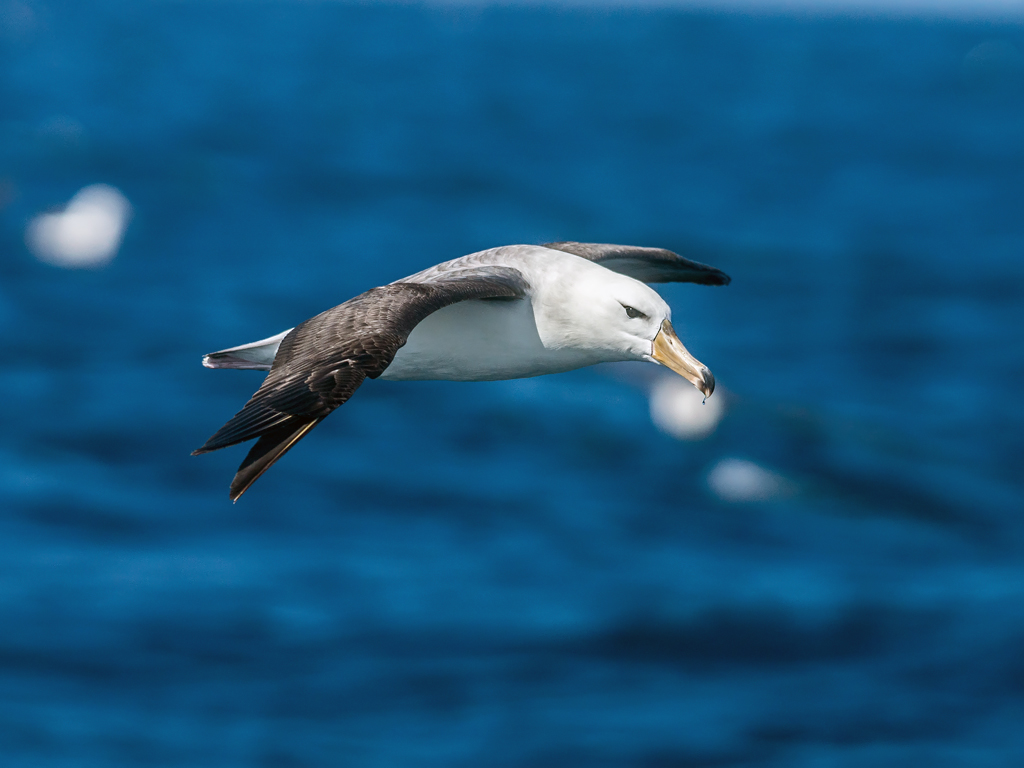
Sideways flight didn’t develop overnight but emerged gradually through millions of years of evolution in response to specific environmental pressures. The black-browed albatross (Thalassarche melanophris) faced the challenge of navigating the powerful and unpredictable winds of the Southern Ocean, where traditional forward flight often proved inefficient or dangerous. Natural selection favored individuals with anatomical variations that allowed for better wind manipulation and energy conservation. This evolutionary process resulted in subtle but significant changes to wing structure, shoulder joint flexibility, and neurological control systems that coordinate flight movements. What began as a slight ability to adjust wing positioning eventually developed into the full sideways flight capability we observe today.
Anatomical Adaptations Enabling Sideways Flight
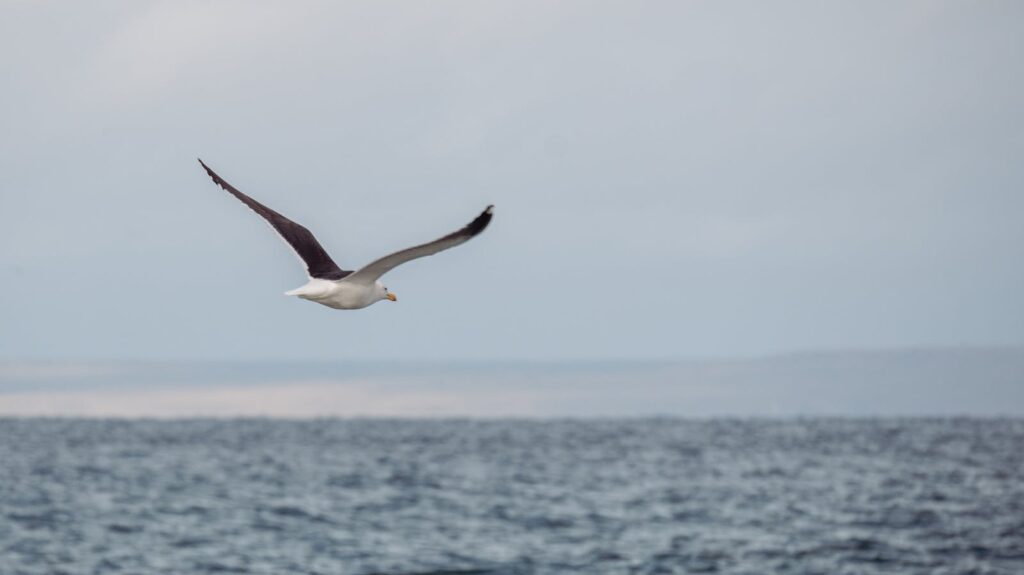
The black-browed albatross possesses several distinct anatomical features that make sideways flight possible. Their exceptionally long, narrow wings—spanning up to 8 feet—have a unique structure with modified primary feathers that can rotate independently at specific angles relative to oncoming wind. The shoulder joint exhibits extraordinary flexibility compared to other birds, allowing for a greater range of wing positions without compromising structural integrity. Additionally, their breast muscles show asymmetrical development, providing the strength and control needed to maintain stability during sideways movement. The bird’s hollow bones, while lightweight like other avian species, contain reinforcement at stress points that would otherwise be vulnerable during lateral flight maneuvers.
The Mechanics of Sideways Flight
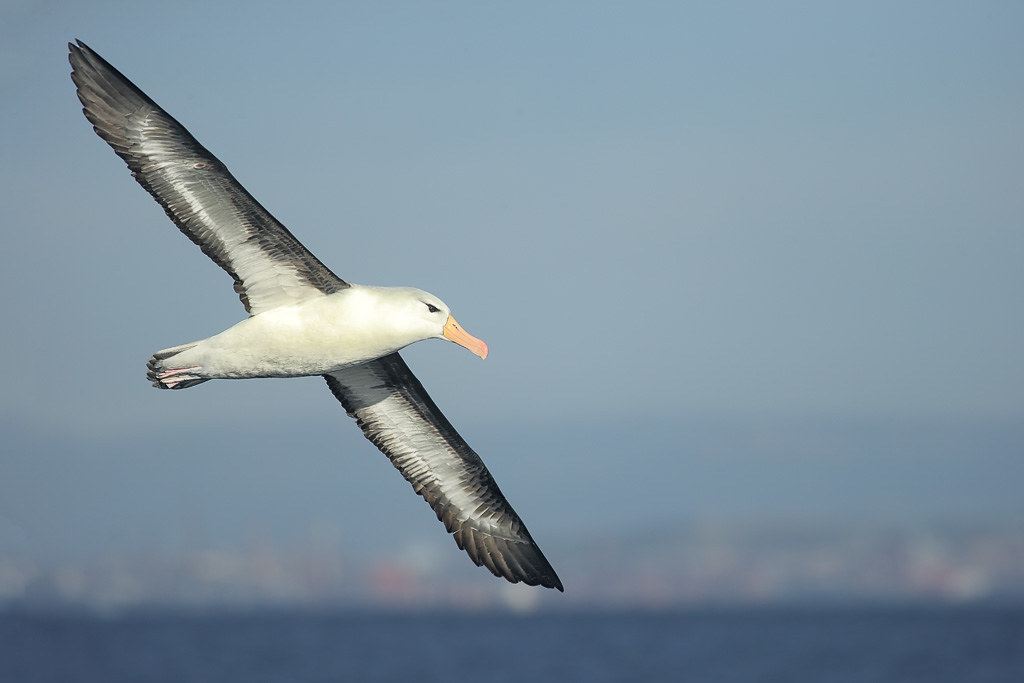
Sideways flight operates on principles that differ significantly from conventional avian locomotion. When initiating sideways movement, the albatross first positions itself perpendicular to the wind direction, then adjusts its wings asymmetrically, typically lowering the windward wing slightly while raising the leeward wing. This creates a controlled aerodynamic imbalance that generates lateral movement while maintaining forward momentum. The tail feathers spread in a specific configuration to provide stability and prevent unwanted rotation. Unlike forward flight, which relies primarily on wing flapping for propulsion, sideways flight utilizes wind energy more directly, creating what aerodynamicists call “dynamic soaring.” The bird continuously adjusts minute aspects of its wing position to regulate speed and direction while moving sideways, demonstrating remarkable neurological control over flight surfaces.
Ecological Advantages of Sideways Flight
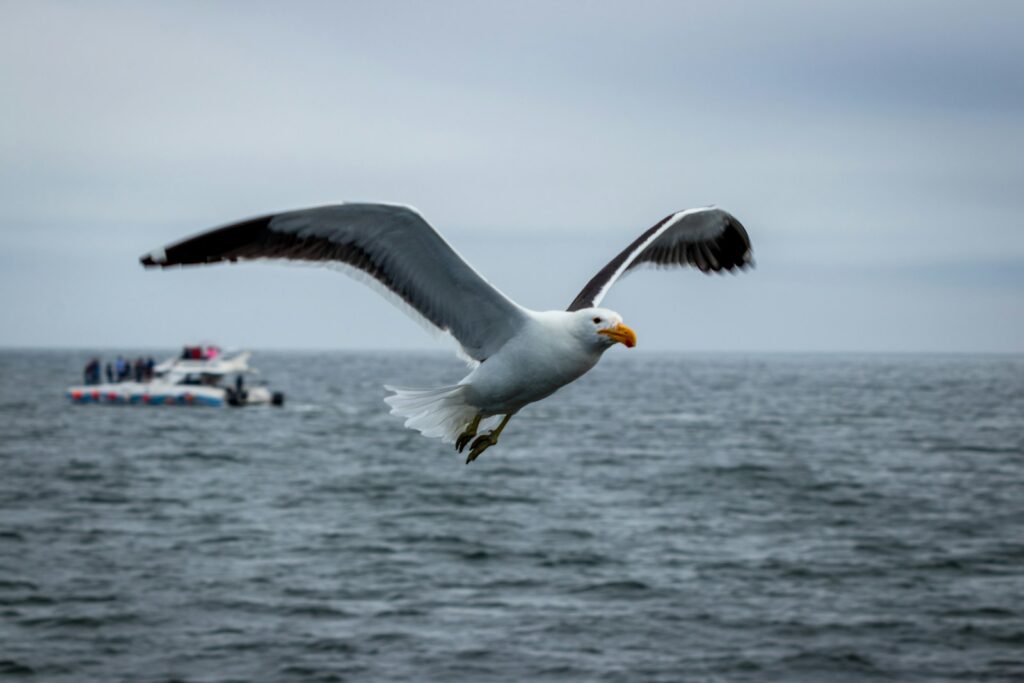
Sideways flight confers several significant ecological advantages that enhance the black-browed albatross’s survival prospects. This unique ability allows these birds to traverse vast oceanic distances with minimal energy expenditure, crucial for a species that may fly over 5,000 miles in a single foraging journey. When facing powerful crosswinds that would force other birds to expend tremendous energy fighting against or compensating for lateral pressure, the albatross simply adjusts its orientation to move sideways with the wind. This adaptation also provides tactical advantages during hunting, enabling the bird to approach prey from unexpected angles or maintain position above promising feeding areas despite shifting winds. Furthermore, sideways flight capabilities enhance maneuverability near cliff nesting sites, where precise control can mean the difference between a successful landing and dangerous collisions.
Distinguishing Sideways Flight from Other Flight Behaviors
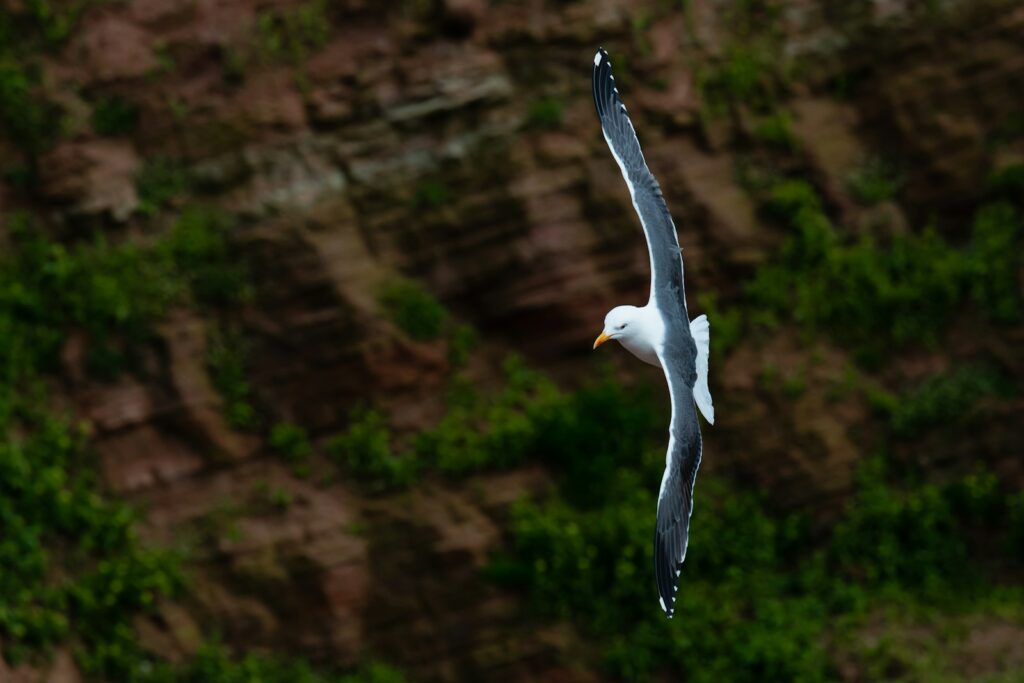
Ornithologists emphasize important distinctions between true sideways flight and other flight behaviors that might appear similar to casual observers. Unlike “yawing,” where a bird briefly turns its body axis during forward flight, sideways flight involves sustained lateral movement while maintaining a perpendicular body orientation to the direction of travel. It also differs from wind-drifting, where birds are passively pushed sideways while attempting to maintain forward direction. The sideways flight of the black-browed albatross represents active control rather than passive movement. Some birds, like kestrels, may appear to fly sideways while hovering against the wind, but they’re maintaining a stationary position relative to the ground rather than achieving true lateral movement. The albatross’s sideways flight involves continuous movement across significant distances while maintaining this unusual orientation.
Scientific Studies of Sideways Flight
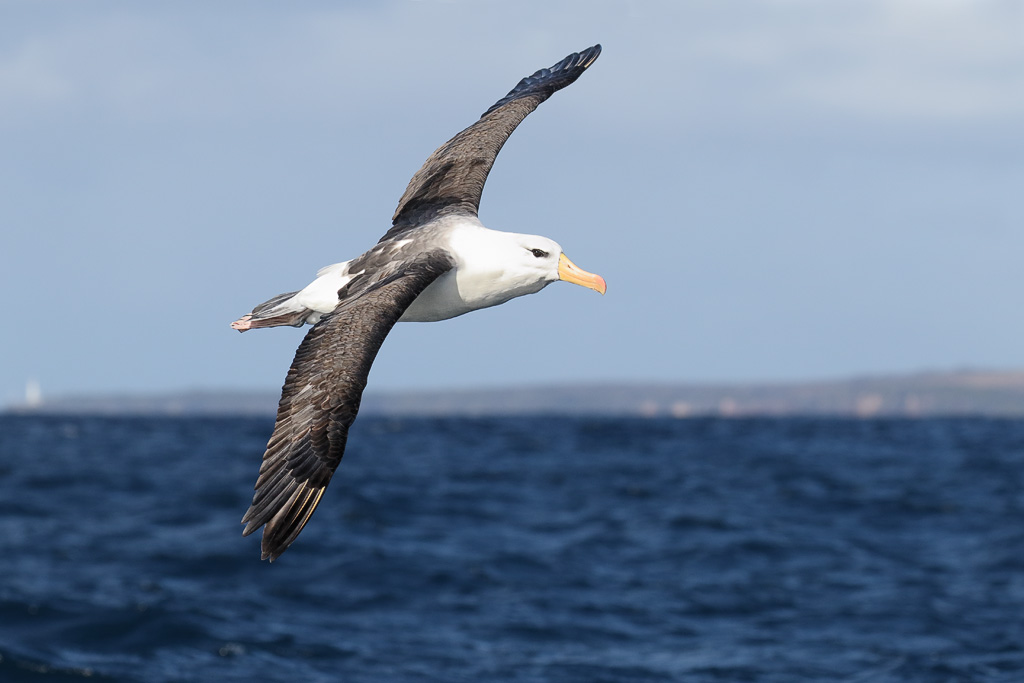
Modern research has significantly advanced our understanding of this rare flight adaptation through sophisticated methods. Scientists at the University of California’s Flight Research Laboratory have attached miniature accelerometers and GPS tracking devices to albatrosses to record precise movement patterns during oceanic journeys. These studies revealed that sideways flight occurs during approximately 18% of total flight time, primarily when birds encounter specific wind conditions with speeds between 15-30 knots. Wind tunnel experiments conducted at Cornell University have replicated these conditions using preserved specimens to analyze aerodynamic forces during simulated sideways flight. Computer modeling using computational fluid dynamics has further illuminated the complex airflow patterns around the wings during lateral movement. These scientific approaches have transformed what was once considered unusual anecdotal behavior into a well-documented flight adaptation with clear biomechanical principles.
Energy Efficiency and Conservation Benefits
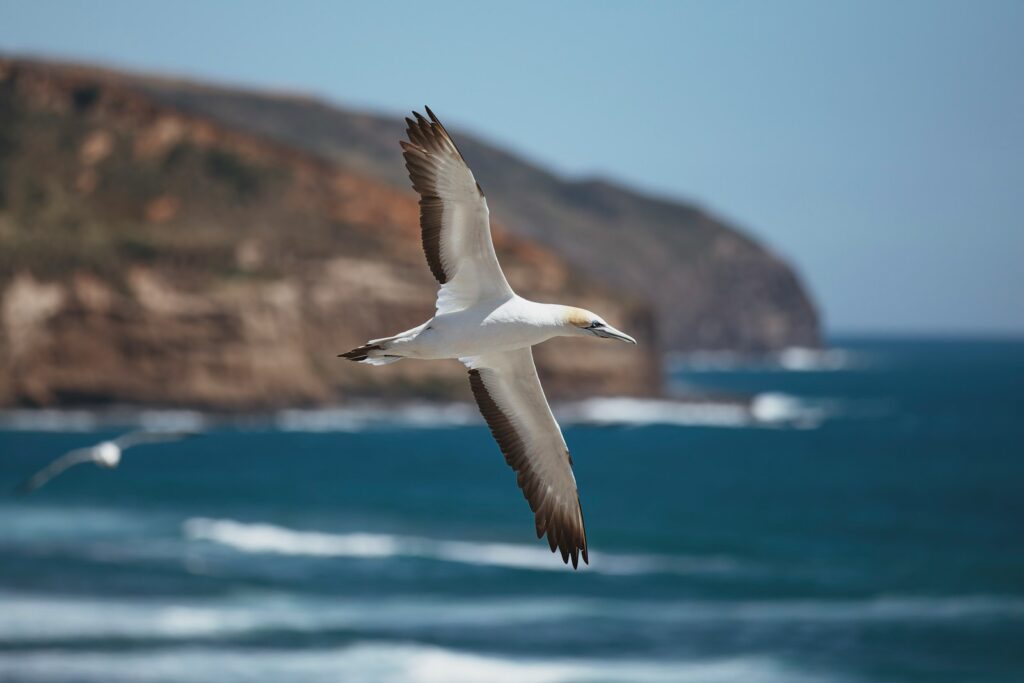
Metabolic studies have demonstrated that sideways flight requires approximately 40% less energy than conventional forward flight when navigating crosswinds of similar velocity. This remarkable efficiency derives from the bird’s ability to harness wind energy rather than fighting against it, converting what would be a challenging condition into an advantageous one. Black-browed albatrosses fitted with heart-rate monitors showed significantly lower cardiac output during sideways flight compared to forward flight in similar wind conditions, indicating reduced physiological strain. This energy conservation proves crucial for a species that spends over 80% of its life at sea and may stay aloft for weeks without landing. The energy savings translate directly to survival advantages, allowing birds to allocate more resources to reproduction and maintaining physiological reserves during periods of food scarcity.
Learning and Development of the Skill
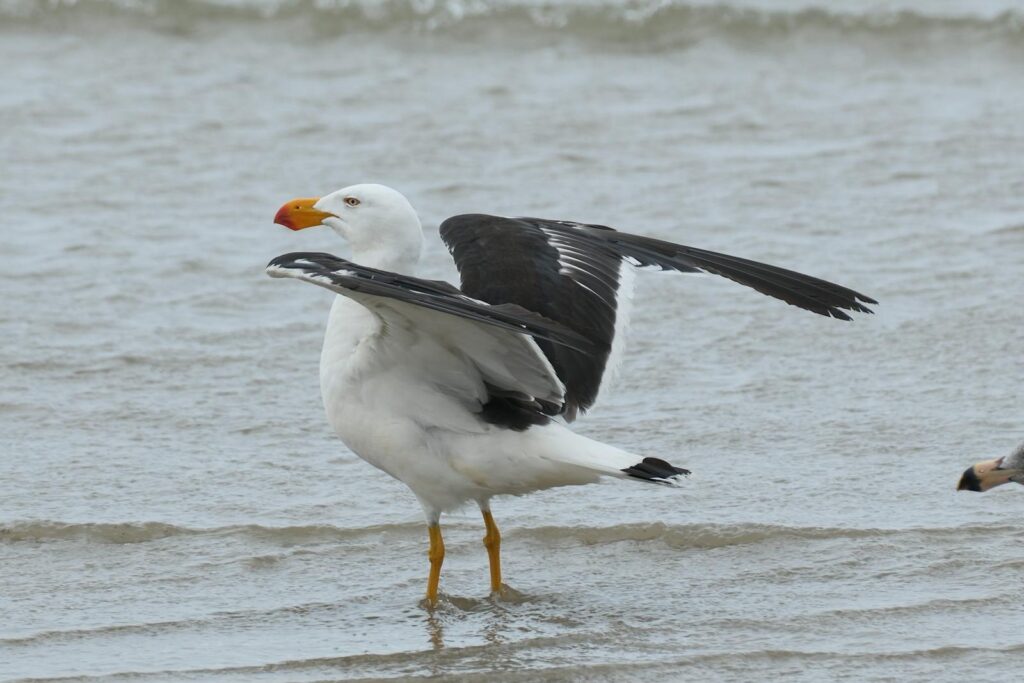
Young albatrosses don’t hatch with the immediate ability to fly sideways but must develop this sophisticated skill through a combination of innate predisposition and learning. Juvenile birds begin with basic forward flight after fledging, typically around 4-5 months of age, and gradually incorporate sideways movements as they gain experience. Observational studies at breeding colonies have documented adult birds seemingly demonstrating proper technique during group flights with younger birds present. By about 14-18 months of age, most young albatrosses have developed proficient sideways flight abilities, though their execution lacks the refinement seen in mature birds. Researchers have noted that birds raised in rehabilitation settings without exposure to experienced adults take significantly longer to develop proper sideways flight technique, suggesting an important social learning component to this specialized skill.
Challenges in Studying This Adaptation
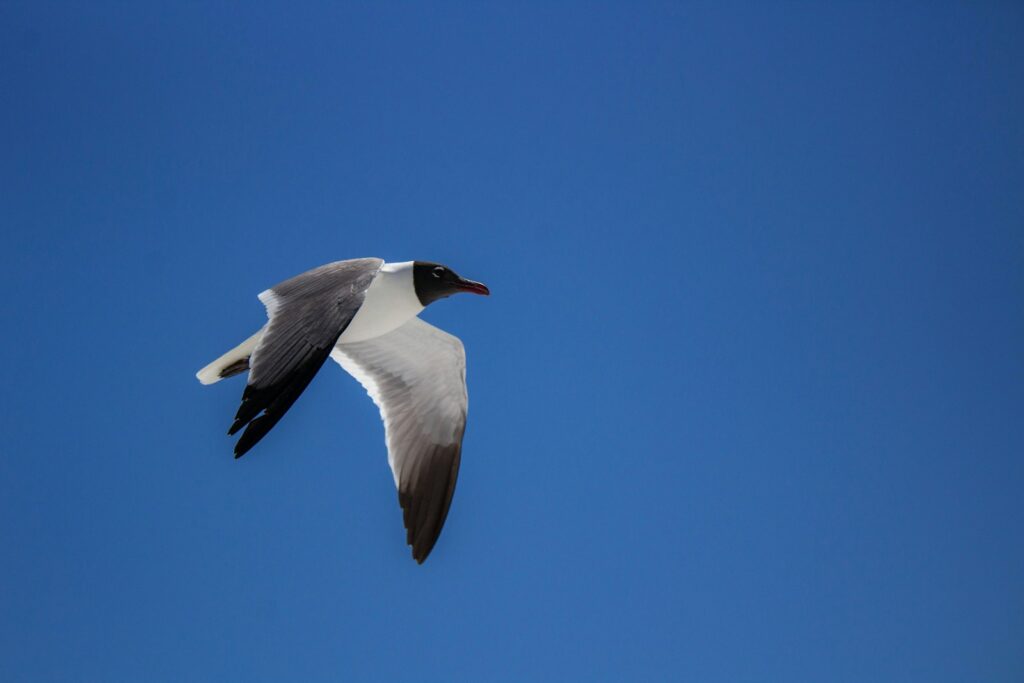
Researchers face considerable obstacles when investigating sideways flight, which partly explains why this adaptation remained poorly documented until recently. The remote oceanic habitat of albatrosses makes direct observation exceptionally difficult, with most sideways flight occurring far from land, where traditional observation methods are impractical. Weather conditions that trigger sideways flight can be dangerous for research vessels, creating a paradoxical situation where the behavior is most common precisely when it’s most challenging to study. Traditional wind tunnel testing struggles to replicate the complex, turbulent conditions of the Southern Ocean that prompt this behavior. Additionally, the sophisticated equipment required for detailed flight analysis must be extraordinarily lightweight to avoid altering the bird’s natural flight dynamics, presenting technological challenges that have only recently been overcome with miniaturized sensors and transmitters.
Conservation Implications
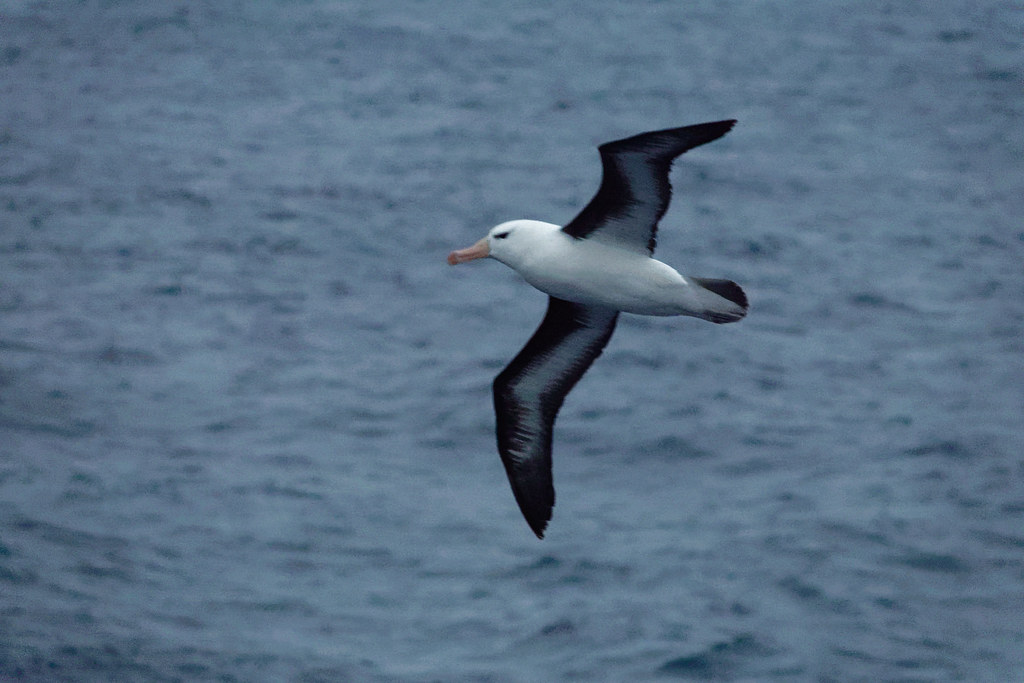
Understanding the black-browed albatross’s sideways flight has developed important conservation implications as the species faces mounting threats. Climate change models predict increasing wind speed variability across the Southern Ocean, potentially requiring birds to use sideways flight more frequently or in conditions beyond their adaptive capacity. Long-line fishing operations, responsible for thousands of albatross deaths annually, have begun implementing modified protocols when albatrosses are observed using sideways flight nearby, as this behavior indicates specific wind conditions that affect bait deployment. Conservation organizations now include protection of oceanic “wind corridors” in marine sanctuary proposals, recognizing that certain wind patterns critical for efficient albatross movement deserve specific protection. Additionally, rehabilitation programs for injured albatrosses now incorporate specialized training environments that allow recovering birds to redevelop sideways flight capabilities before release.
Similar Adaptations in Other Species

While the black-browed albatross demonstrates the most developed form of sideways flight, some other species exhibit variations of this adaptation. The wandering albatross (Diomedea exulans) displays limited sideways flight capabilities, though with less precision and duration than its black-browed relative. Certain shearwater species, particularly the sooty shearwater (Ardenna grisea), have been documented using brief sideways flight maneuvers when navigating coastal updrafts. Interestingly, engineering analysis suggests that the extinct Pteranodon, a flying reptile from the Late Cretaceous period, may have possessed anatomical features consistent with sideways flight capability, though this remains speculative without direct observation. These parallel adaptations in different lineages suggest that sideways flight represents a viable solution to specific aerodynamic challenges that have emerged multiple times through convergent evolution.
Future Research Directions
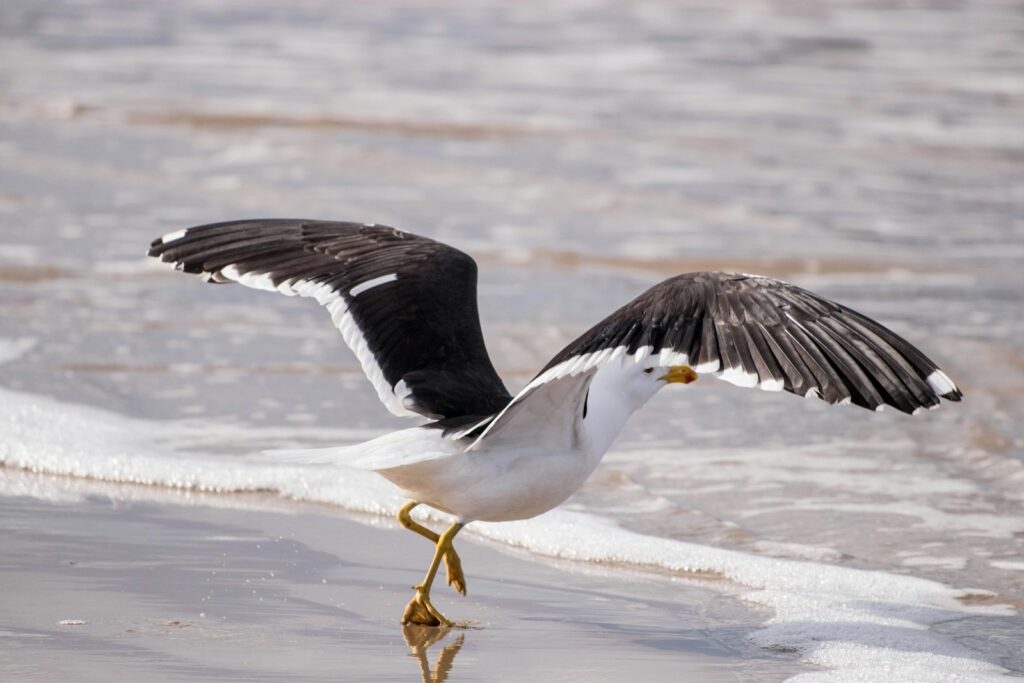
Ornithologists and biomechanics researchers have identified several promising avenues for expanding our understanding of sideways flight. Advanced computational modeling using machine learning algorithms is being developed to predict how climate change may affect wind patterns and subsequently impact the efficiency of sideways flight adaptations. Comparative genomic studies are underway to identify genetic markers associated with the anatomical adaptations that facilitate sideways flight, potentially revealing the evolutionary timeline of this trait’s development. Behavioral ecologists are designing studies to determine whether sideways flight abilities influence mate selection, testing the hypothesis that more skilled practitioners may gain reproductive advantages. Additionally, biomimetic engineers at Stanford University are studying the principles of sideways flight to develop new drone technologies capable of more efficient flight in variable wind conditions, demonstrating how natural adaptations can inspire technological innovation.
Conclusion
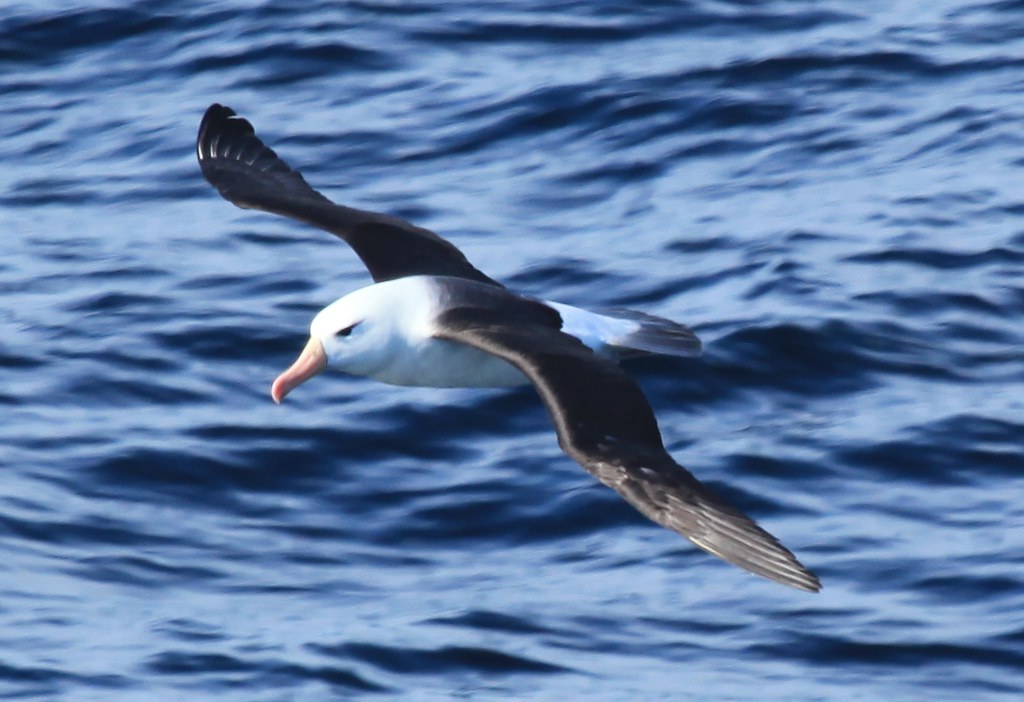
The black-browed albatross’s ability to fly sideways represents one of nature’s most specialized adaptations—a perfect example of how evolutionary pressures can produce extraordinary solutions to environmental challenges. This rare capability demonstrates the remarkable plasticity of avian flight and reveals how seemingly simple actions like flying can evolve into complex, specialized behaviors when ecological conditions demand it. As we continue to study this unique adaptation, we gain not only a greater understanding of avian biology but also potential insights for human aviation technology. In the face of environmental changes threatening albatross populations worldwide, the preservation of these magnificent birds and their extraordinary flight capabilities becomes increasingly urgent. Their sideways flight remains a testament to the ingenuity of natural selection and the wonders still waiting to be fully understood in our natural world.
